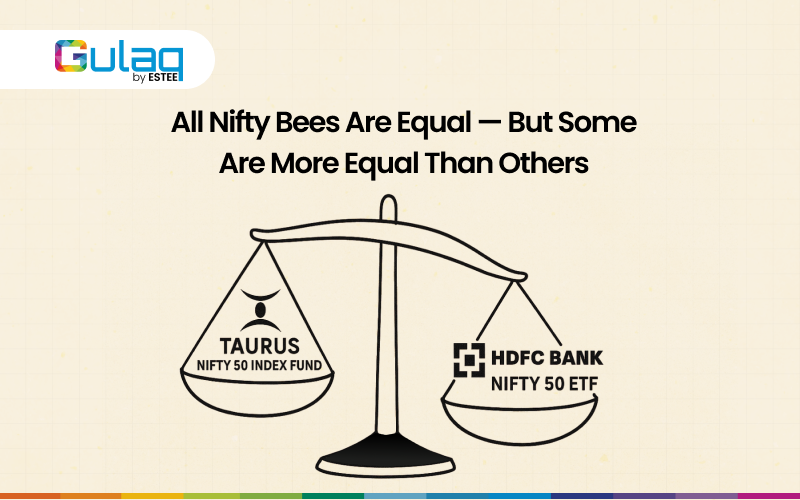
My Prediction for 2024 (or 2044?)
A few years ago, a journalist reached out to me to get my views on the expected market returns for the next year.
I wasn't really sure what to say, so I gave him the most generic answer one could find - "I expect markets to give a 12-15% return next year."
Honestly, I had no idea what could happen in such a short duration as 1 year. I was just trying to sound intelligent and was afraid to voice my actual view, lest someone might consider me a novice.
Since then, I have followed a policy of giving out my views about short-term market movement with the same standard and boring reply - "I do not know, and I do not care.".
Why?
Because I am a long-term investor, and I know that the market rewards this behavior with phenomenal returns.
I believe that markets can be quite unpredictable over the short term, and investors are often better off investing in debt when their investment horizon is so narrow.
Over the next 10 years, I am certain that we are going to see a few bad years with negative returns, a few average years with moderate returns, and a few bumper years where we might see as high as 50% returns or more in a single year.
Of course, it would be amazing if we could remain invested in those bumper years and pull out during the bad ones. However, it is easier said than done. It's very hard to successfully time the market consistently, and even the likes of Warren Buffett and Howard Marks have admitted to lacking such skill.
The best course of action is to stay invested and let compounding do its magic over time.
| Date | Nifty | Multipule | Max Drawdown |
|---|---|---|---|
| Dec-03 | 1880 | - - | - - |
| Dec-13 | 6304 | 3.3 X | 2008 - >50% |
| Dec-23 | 20,133 | 3.2 X | 2020 - > 40% |
| Dec-33* | 65,835 | 3.2 X | 40-50% |
| Dec-43 | 2,15,280 | 3.2 X | 40-50% |
From 2004 to 2013, Nifty went from 1,880 to 6,304 - a 3.3X growth.
From 2014 to 2023, Nifty again grew 3.2X.
During both decades, we saw as much as a 40-50% drawdown during the subprime crisis of 2008 and the COVID-19 pandemic of 2020, respectively.
Despite such a massive drop, over time, the markets corrected themselves and grew higher than ever, delivering phenomenal returns to those who remained invested.
If an investor would have withdrawn his/her money during these periods, he/she would have settled for a massive dent in their portfolio and might have missed the train when markets were correcting upwards. In such a case, their portfolios would have lagged behind.
Assuming that the market follows the same trajectory of growth (3.2X), by 2033, Nifty can easily breach 65,000 levels. By 2043, 2,15,000 levels.
This looks unbelievable right now, but that's the power of compounding in action. For Nifty to reach these levels over the next couple of decades, it has to grow at a rate of about 12-13%, which has been the historical average range.
But these returns won't be easy to realize. We know from the past that every decade or so, we have a huge crisis, in which equity markets fall 40-50%. Those who show resilience and remain invested during times of crisis will reap the long-term reward.
Below is the S&P 500 data for the past 95 years.
| 1 Year | 5 Years | 10 Years | 20 Years | 30 Years | |
|---|---|---|---|---|---|
| Min | -44 | -13 | -2 | 2 | 8 |
| Max | 53 | 28 | 20 | 18 | 35 |
| Max | 12 | 10 | 10 | 11 | 11 |
See a pattern?
The range of return for a 1-year return is a massive 97% (max-min). As we move towards a longer investment horizon, though, the risk gradually diminishes.
Even the minimum 30-year return of 8% would be deemed decent as it easily dwarfs inflation and G-Sec yields. Long-term investment offers much more certainty and reliability.
That's the reason when somebody asks for my views about short-term market movement, I always reply - "I do not know, and I do not care."
Related Posts
Is Market Cap the Best Way to Build an Index?
Nifty 50 is a free-float weighted index – a slight variation of market cap weighted…
3 Books That Changed How I Think About Risk and Markets
Over the past two decades, I’ve built a quiet but consistent habit — reading. Not…
All Nifty Bees Are Equal — But Some Are More Equal Than Others
The title, inspired by George Orwell’s classic Animal Farm, perfectly captures the essence of this…
Investing with Confidence by Prioritizing Fundamentals in Volatile Markets
Investing in the stock market is a roller-coaster ride. Recent global trade tensions, heavy outflows…








